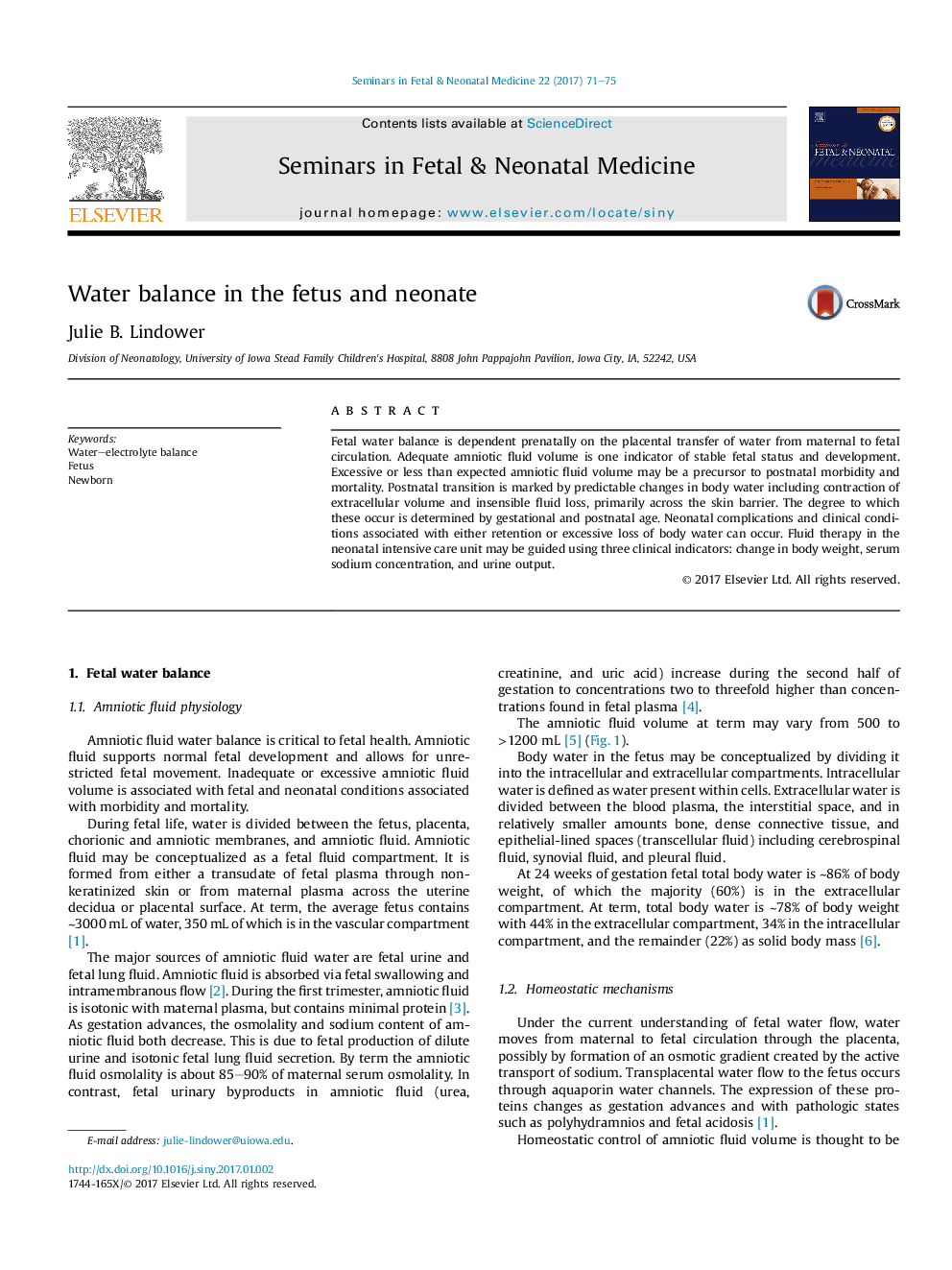| Article ID | Journal | Published Year | Pages | File Type |
|---|---|---|---|---|
| 5696945 | Seminars in Fetal and Neonatal Medicine | 2017 | 5 Pages |
Abstract
Fetal water balance is dependent prenatally on the placental transfer of water from maternal to fetal circulation. Adequate amniotic fluid volume is one indicator of stable fetal status and development. Excessive or less than expected amniotic fluid volume may be a precursor to postnatal morbidity and mortality. Postnatal transition is marked by predictable changes in body water including contraction of extracellular volume and insensible fluid loss, primarily across the skin barrier. The degree to which these occur is determined by gestational and postnatal age. Neonatal complications and clinical conditions associated with either retention or excessive loss of body water can occur. Fluid therapy in the neonatal intensive care unit may be guided using three clinical indicators: change in body weight, serum sodium concentration, and urine output.
Related Topics
Health Sciences
Medicine and Dentistry
Obstetrics, Gynecology and Women's Health
Authors
Julie B. Lindower,
